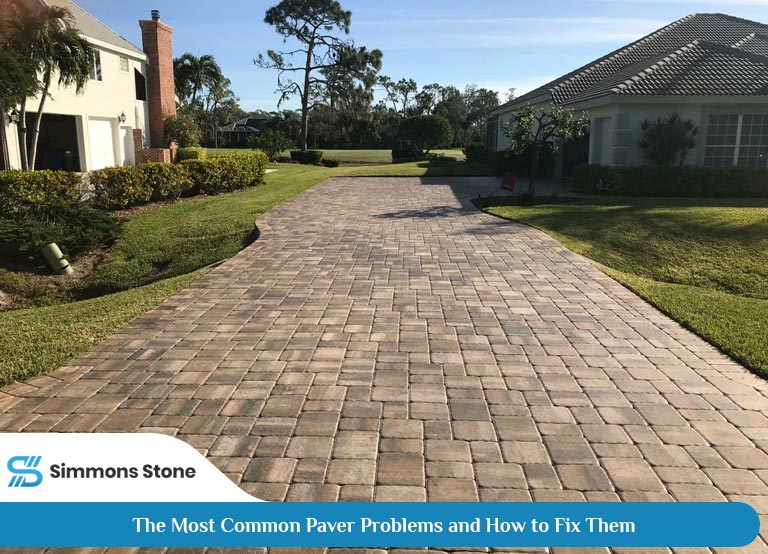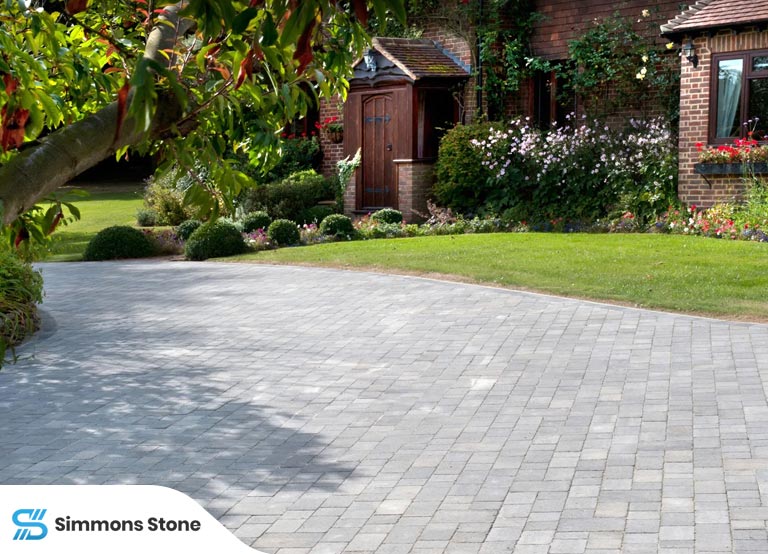The Most Common Paver Problems and How to Fix Them
Pavers are a popular choice for outdoor spaces due to their durability and aesthetic appeal. From walkways to patios, they can transform any area into something special. However, like any outdoor surface, pavers can encounter common paver problems over time. Understanding these issues and knowing how to address them can help you maintain the beauty and functionality of your outdoor space.

8 Common Paver Issues Homeowners Face and Their Solution
1. Stains
One of the most common paver problems homeowners face is stains. Stains can result from oil spills, tire marks, or organic materials, which can make your pavers look unpleasant and dull.
How to fix stains:
To keep your pavers looking fresh, regular cleaning is essential. A simple wash with a hose can remove dirt and surface stains. For tougher marks, you can use a mild cleaning solution with dish soap or white vinegar.
Scrubbing with a wire brush and rinsing can bring back the original luster. Sealing your pavers every few years can also help prevent stains from setting in.
2. Weeds
Another issue you might encounter is weeds growing between the pavers. This is one of the frequent paver problems. Weeds can slip through the joints, creating an unpleasant look in your outdoor area.
How To Fix:
The best approach to prevent this is to use quality joint sand, like polymeric sand, during paver installation. If you already have weeds, remove them manually and replace the existing sand with the polymeric variety, which helps inhibit regrowth.
3. Loose Pavers
Over time, pavers can become loose due to shifting ground or settling sand. Loose pavers create an uneven walking surface and are a potential tripping hazard.
How To Fix:
When considering how to fix uneven pavers, it’s crucial to address the issue promptly. Remove each loose paver, add fresh joint sand, and reset the pavers back in place. If you’re unsure how to do this, consulting a local contractor can ensure it’s done correctly.
4. Tree Roots
Tree roots can be a significant factor in paver lifting and shifting. As roots grow, they can push up against the pavers, causing them to become uneven.
How to Fix:
If you notice tree roots causing issues, it’s best to address them before repairing your pavers. You’ll need to carefully lift the stones, remove the roots, and then re-level the area. For lasting paver-shifting solutions, consider installing a root barrier to prevent future problems.
5. Cracked Pavers
Cracked pavers are another common problem, and they often occur due to age or harsh weather conditions.
How To Fix:
Fortunately, repairing cracked pavers is relatively straightforward. Simply remove the damaged paver and replace it with a new one. Make sure to add joint sand after installation to ensure a secure fit. Keeping extra pavers on hand can make this process easier when a repair is needed.
6. Sunken Pavers
Poor soil compaction during installation is one of the leading reasons for the paver sinking. Sunken pavers can create dangerous trip hazards and affect the overall appearance of your outdoor area.
How To Fix:
If you notice any sunken spots, the solution involves removing the affected pavers, adding more base material, and then recompacting the area before replacing the pavers. Understanding the reasons for paver sinking can help you avoid future issues, such as poor drainage or inadequate installation methods.
7. Fading
Over time, pavers fade due to exposure to sunlight and harsh weather conditions. While this is not a structural issue, it can affect the appearance of your outdoor space.
How To Fix:
To bring vibrancy back to your pavers, consider applying a new coat of sealer. This not only enhances color but also provides a protective layer against future fading.
8. Poor Drainage
Poor drainage is another common paver problem you might encounter. If you notice water pooling on your paver patio or driveway, it might indicate inadequate drainage. This can lead to further issues, such as sinking or shifting pavers.
How To Fix:
When facing this problem, it’s wise to consult a paver installation professional. They can assess the situation and offer proper drainage solutions to ensure your pavers remain stable.

Conclusion
Maintaining pavers is not an overwhelming task. By being aware of the common paver problems and knowing how to fix them, you can keep your outdoor spaces looking their best for years to come. From simple cleaning methods to more technical repairs, addressing issues promptly will save you time and money in the long run.
Whether you’re dealing with stains, cracks, or shifting pavers, many solutions are easy for homeowners to tackle. You can reach out to a paver contractor if you are unsure about how to deal with paver problems. They have the experience to help you resolve the paver issues efficiently.
FAQ
What are the most common paver problems homeowners face?
The most common paver problems include stains, weeds growing between pavers, loose paver tiles, cracked pavers, sunken or shifting pavers, and poor drainage. These issues can arise from weather conditions, soil movement, or improper installation. Regular maintenance and prompt repairs can help address these concerns effectively.
How can I fix uneven or sunken pavers?
To fix uneven or sunken pavers, start by removing the affected stones. Check the underlying base; if it’s settled or compacted poorly, add more base material like polymeric sand or crushed gravel. After leveling the ground, replace the pavers and add joint sand between them for stability. If you’re unsure how to proceed, consulting a contractor can ensure a professional-level repair.
What are the warning signs of cracked pavers?
If you notice cracked pavers, it’s advisable to replace them promptly to maintain safety and aesthetics. Remove the cracked paver and inspect the area. If the crack is extensive, replace it with a new one and add joint sand as needed. Keeping a few extra pavers on hand can simplify this process for future repairs.